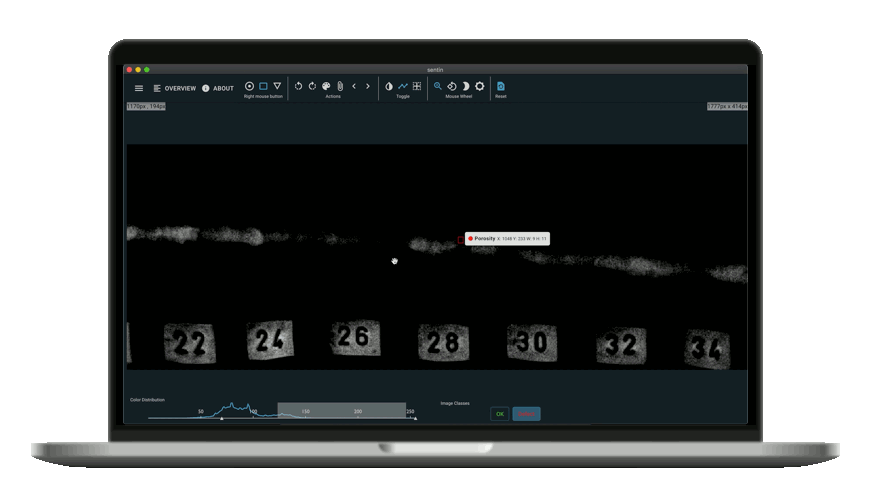Non-destructive testing (NDT) plays a significant role in ensuring that engineering systems such as bridges, nuclear plants, and airplanes, are in good shape and safe to use. This great input is attributed to the test methodology’s capability to detect and analyze welding defects and discontinuities in an engineering system or component without inflicting further damage to the original part or system. However, if the right procedures aren’t followed, NDT can lead to various failures and catastrophes. This article focuses on the hiccups and the potential subsequent impacts.
These are 3 types of failures and catastrophes in NDT:
- NDT Unreliability
- Failure Due to Incorrect Interpretation
- The catastrophic impact of NDT Failures
Here are some articles about NDT and welding:
– Top 3 incredible Places for NDT (Non-Destructive Testing)
1. Danger | Using the wrong NDT Method
In some cases, a non-destructive test process may fail to detect some critical flaws in crucial engineering components. In some instances, human factors are to blame for the failures. For instance, lack of the necessary skills/experience could lead to poor inspection, whereby unacceptable defects go unnoticed.
The reliability of an NDT method is the test’s ability to detect critical defects in a system. When a test fails to detect critical defects with significant impact on the integrity of a structure, the undetected problems might escalate to cause structural failure. Consequently, the compromised structure might turn out to pose a safety and cause negative economic, environmental and reputation impact.
Axial Flaws in North Anna Steam Generator
For instance, in March 2012, an ultrasonic inspection, one of the NDT approaches, missed five significant axial flaws in North Anna steam generator. The test involved a site-specific mock-up for the qualification of the inspection procedure. An encoded passed array technique was used to scan for circumferential defects. However, even with all those keen approaches in place, some flaws were still missed.
Earthquakes or other environmental disasters can cause damage to a nuclear power plant or steam generator. These can lead to a serious disaster in the short or long term! Explosions or leaks then lead to widespread damage or even contaminated regions.

2. Danger | Failure Due to Incorrect Interpretation
In some cases, the NDT equipment/system might detect the flaws, but the failure arises when it comes to defect sentencing. Improper defect sentencing/interpretation simply means that the inspector failed to clarify the accurate picture of the significance of the flaw. For instance, an inspector can downplay the seriousness of a defect, terming it as so minute to cause any remarkable structural failure, thus not requiring any intervention. In most cases, the misinterpretation occurs when the assessor lacks sufficient levels of the necessary skills and experience. Additionally, external factors such as physical and social environment as well as motivation factors have a remarkable role to play for NDT accuracy.

Explosions
Explosions are also possible catastrophes of the non-destructive testing. Liquid Penetrant Testing employs a form of kerosene called Naphtha. The high-grade cleaner evaporates quickly and is very effective for pre-cleaning. However, high-grade Naphtha is flammable. Therefore, if not handled carefully, especially in confined spaces, the cleaning agent can cause an explosion. This can lead to massive property damages, physical injuries on people and loss of lives. Besides, prolonged exposure to Naphtha can result in respiratory issues.
Eddy current testing, another form of NDT, also has its fair share of potential dangers that can be catastrophic. The people involved running the test fail to shut down the system correctly when changing probes, they might experience serious electrical shock from the probe connection points. The mistake could also trigger sparks that might cause an explosion.
Nondestructive tests are instrumental in the maintenance of the integrity of various crucial mechanical systems and components. Nevertheless, failures resulting from human factors or inherent errors can occur if particular things aren’t well taken care of. Therefore, it’s important that inspectors apply various testing technologies and complementary techniques to ensure that no significant defect in a mechanical system or unit goes unnoticed on time. Besides, companies and individuals looking for NDT inspectors should ensure that they confirm that the experts they engage are sufficiently skilled and experienced. This would go a long way to preventing some failures that can be catastrophic. It’s also crucial to ensure that the testing process is done with utmost care to prevent exposure that can harm people and the external environment at large.
3. Danger | Wrong procedures or instructions.
NDT failures as a result of error of omission or misinterpretation of results can be catastrophic. For instance, if serious defects in a nuclear plant are overlooked in a non-destructive test process, highly radioactive nuclear waste can find its way to the environment. Plants and humans would be the key victims of the pollution, some losing their lives or sustaining long-term damages.
Potential Radiographic Testing (RT) Hazard
Radiographic testing (RT) is a component of non-destructive testing that utilizes x-rays or gamma rays for internal structure examination. The testing procedure involves placing the test-part between the gamma or x-ray source and the film (detector) to scan for defects in the component.
Unfortunately, RT can pose hazards to human tissue if a person handling the process is overexposed to the film processing chemicals used in the procedure. This danger is mainly pronounced if the process takes place in an area that’s not well ventilated. Someone interacting with the process for an extended period in such an environment has high risks of various health issues as a result of the inhalation of the fumes. Apart from direct health concerns, RT has waste effluent that can cause environmental pollution. The waste resulting from film processing contains residual silver and other possibly harmful deposits can have a serious adverse effect on waterways, wildlife and plants if not disposed of appropriately.
Where X-Ray Tube is used for NDT testing, the tube head is filled in using an inert gas such as Sulfur-Hexafluoride. Unfortunately, overexposure to this gas can be a health hazard. If a person breathes in the gas in low quantities, the gas relaxes the vocal cords, making his/her voice drop. Inhaling larger volumes of the gas can be more dangerous, as it can lead to suffocation. In such a case, doctor’s intervention is required to vacuum out the gas before it becomes fatal.

Lung Ulcerations and Eye/Skin Tissue Damage
Liquid penetrant testing uses the developer agent for improved penetrant indication visibility. Unfortunately, the agent can also cause problems when the testing is conducted in confined spaces. Prolonged inhalation of the agent can cause respiratory issues as it enters the lungs and absorbs moisture from the walls of the organs. Consequently, ulcerations develop in the lungs.
 Penetrant Testing - application of the contraster
Penetrant Testing - application of the contraster
Karl Deutsch Prüf- und Messgerätebau GmbH + Co KG
https://www.karldeutsch.de
Licenced under Creative Commons Attribution 3.0 Germany
Furthermore, the black lights used in liquid penetrant inspection produce UV-A, UV-B and UV-C light wavelengths. Too much exposure to these rays can cause significant eye and skin tissue damage in humans over time.
How to work flawless?
What is the sentin EXPLORER?
All these catastrophes and failures are reasons for thousands of dead people, destroyed buildings and whole cities. To prevent such disasters, professional inspectors and supporting software should be used to evaluate images and data from constructs. Experienced inspectors often have concentration problems, resulting in errors that can cost lives and millions of dollars. One supporting software is the sentin EXPLORER. This evaluation software supports the examiner in the evaluation and can automate this process by an artificial intelligence.
The sentin EXPLORER is a tool to automate such inspection or image evaluation tasks. Our customers sometimes produce thousands of images per week, all of which have to be reliably checked. Therefore we give you the power to perform evaluations with the help of artificial intelligence and to find defects more reliably or gain new insights.
If you want to learn more: The 5 Types – What is Non-Destructive Testing (NDT)?






